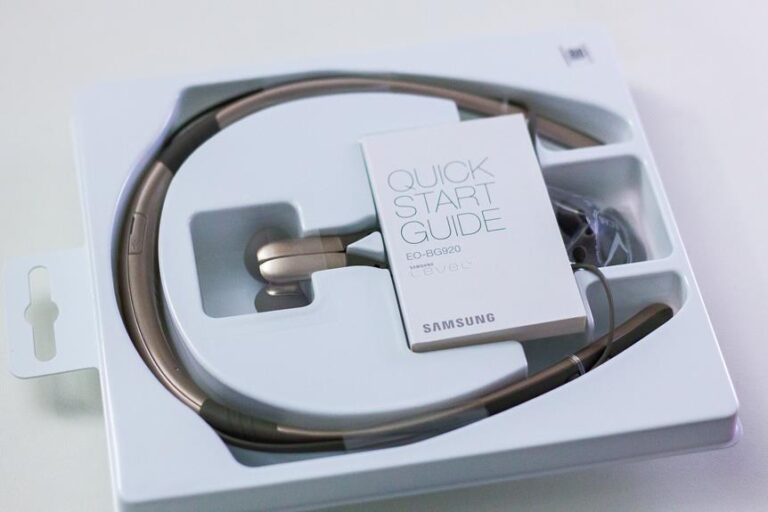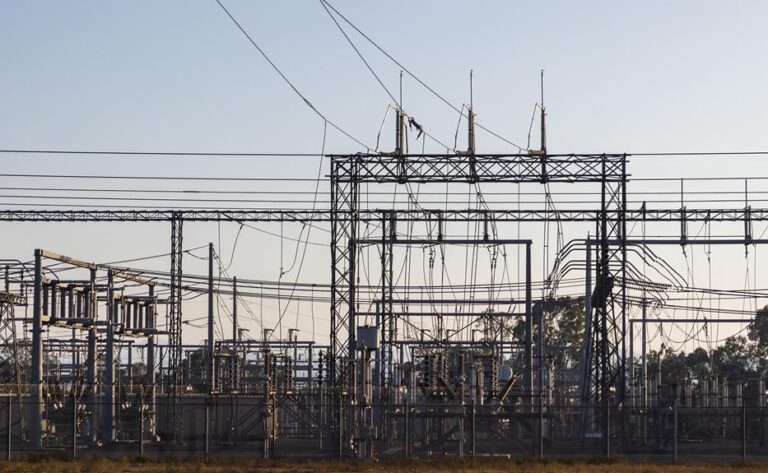Tech Insights: Performance Gauges and Their Role in Tuning
In the increasingly complex world of technology, where does the humble performance gauge fit in? This often-overlooked tool holds the keys to efficient system tuning. From understanding their basic functionality to leveraging their predictive capabilities, performance gauges are the unsung heroes of system optimization. This article will delve into the intricacies of these gauges, illustrating their importance in preventing system overloads and enhancing overall efficiency, while also exploring future trends in performance gauging technology.
Key Takeaways
- Performance gauges provide real-time data on various parameters to optimize vehicle performance and aid in electronic stability control tuning.
- Reading and interpreting gauges accurately is crucial for optimizing system performance and identifying deviations.
- Gauges play a pivotal role in enhancing vehicle performance by providing precise data for informed decision-making and timely adjustments.
- There are different types of performance gauges, such as mechanical and digital gauges, each offering unique advantages and suitable for specific needs.
Understanding the Basics of Performance Gauges
One must grasp the fundamental principles of performance gauges to effectively utilize them in the tuning process. Performance gauges are instrumental in optimizing the performance of a vehicle. They provide real-time data on various vehicle parameters, thereby facilitating informed decision-making during electronic stability control tuning.
A key component of performance gauges is the performance throttle position sensor. This sensor aids in monitoring the throttle's position, which is crucial in dictating the engine's overall operation. It essentially influences the air-fuel mixture, ignition timing, and other engine parameters, thereby playing a pivotal role in enhancing vehicle performance.
Moreover, performance gauges enable a thorough understanding of the vehicle's dynamics. This is particularly beneficial when performing electronic stability control tuning, which adjusts the vehicle's handling and stability. By providing precise data on the vehicle's current state, performance gauges empower users to make accurate modifications, thereby liberating them from guesswork and potential errors.
Understanding the underlying principles of performance gauges is, therefore, indispensable for efficient tuning. Having established the basic understanding, we will now transition into the subsequent section discussing the importance of performance gauges in tuning.
The Importance of Performance Gauges in Tuning
The criticality of performance gauges in the tuning process can be attributed to three key aspects: Gauge Selection, Reading Gauges Correctly, and Gauges Impact on Tuning. A pertinent choice of gauge not only enhances the precision of tuning, but also ensures the longevity of the system. Understanding the necessity to read gauges correctly and acknowledging their impact on tuning is pivotal in maximizing the performance of a tuned system.
Gauge Selection
In tuning, selecting the appropriate performance gauges plays a crucial role in ensuring optimal system performance and efficiency.
- Consider a data logging system that accurately records and processes information from various sensors, delivering real-time feedback to optimize tuning.
- A wideband oxygen sensor is critical for monitoring air-fuel ratio, a fundamental parameter in engine tuning.
- Look for gauges that offer high resolution and precision. They should provide detailed, accurate data that aids in fine-tuning.
- Consider the durability and reliability of the gauges. They will be exposed to harsh conditions and must withstand them over time.
Reading Gauges Correctly
Understanding how to interpret readings from performance gauges accurately, and efficiently is not only a critical skill for any tuner, but also a significant factor in optimizing the performance and efficiency of a system. An incorrect reading can lead to improper tuning, causing system complications or even failures. Hence, it's crucial to comprehend the numeric scales, color codes, and indicator movements. For instance, in a temperature gauge, a higher reading usually indicates overheating, necessitating immediate attention to prevent system damage. Understanding the normal operating ranges of gauges aids in discerning deviations, enabling timely interventions. A tuner must possess the proficiency to not just read, but also interpret and act upon these readings, thus ensuring optimal system performance and longevity.
Gauges Impact on Tuning
Performance optimization, an abstract yet crucial concept in tuning, heavily relies on the accurate use and understanding of performance gauges. These gauges provide real-time data that directly influence the fine-tuning process, thereby playing a pivotal role in enhancing vehicle performance.
- Data Accuracy: Performance gauges ensure precise data collection, enabling tuners to make informed decisions.
- Real-time Monitoring: These gauges provide immediate feedback on changes, enabling timely adjustments.
- Performance Enhancement: By accurately measuring engine parameters, gauges aid in optimizing performance.
- Preventive Maintenance: Gauges can detect anomalies, potentially avoiding costly repairs.
Different Types of Performance Gauges and Their Uses
Let's delve into the various types of performance gauges available and their specific applications in tuning. Primarily, these can be categorized into mechanical and digital units.
Mechanical gauges, such as boost pressure, oil pressure, and temperature gauges, use physical components to measure parameters. They are renowned for their accuracy, robustness, and relatively straightforward operational principles, making them a favorite for purists. However, they require more complex installation processes and can be prone to mechanical wear over time.
On the other hand, digital gauges offer a futuristic approach to performance measurement. These units may include wideband O2 sensors, EGT (Exhaust Gas Temperature) gauges, and digital multi-gauges. The strength of digital gauges lies in their versatility and the convenience of their installation. They provide real-time, precise readouts and can often display multiple metrics simultaneously.
Nevertheless, the choice between mechanical and digital gauges comes down to the specific needs of the tuner. Whether it's the raw authenticity of mechanical gauges or the high-tech allure of digital counterparts, each type has its unique strengths and applications that can optimize your tuning experience. Understanding these nuances is critical to making an informed decision, enabling liberation through technology.
How Performance Gauges Improve System Efficiency
Through the precise data provided by performance gauges, system efficiency can be significantly enhanced, thereby streamlining the tuning process. Performance gauges serve as critical tools, providing timely and accurate insights into the functioning of various parts of a system.
Here are four ways performance gauges improve system efficiency:
- Real-time Monitoring: Performance gauges offer immediate feedback on system functionality. This real-time monitoring allows for swift identification and rectification of issues, minimizing downtime and improving efficiency.
- Predictive Analysis: Through consistent data tracking, performance gauges can predict potential system failures. This facilitates proactive maintenance, preventing sudden system breakdowns and enhancing overall efficiency.
- Optimization of Resources: By providing data on the utilization of system resources, performance gauges enable optimization. Unused resources can be reallocated, thereby boosting efficiency and productivity.
- Informed Decision Making: Performance gauges generate valuable data that can be used to make informed decisions about system upgrades or changes, leading to enhanced system performance.
The Role of Performance Gauges in Preventing System Overloads
Performance gauges play an instrumental role in averting system overloads by offering real-time insights into system operations. They monitor parameters such as CPU usage, memory allocation, and network traffic, identifying potential bottlenecks before they escalate into critical issues. Thus, a comprehensive understanding of these tools can significantly enhance overall system resilience and performance.
Preventing System Overloads
A significant number of system overloads can be effectively averted through the strategic use of performance gauges. These instruments are crucial in managing system performance and stability by providing real-time data and insights. Consider the following:
- Performance gauges monitor system resources, helping avoid overloads by alerting when resource consumption nears capacity.
- They assist in identifying inefficient processes or applications that may cause overloads.
- By facilitating predictive maintenance, these gauges can preemptively detect potential issues, allowing for timely interventions.
- Lastly, they aid in capacity planning, ensuring systems are scaled adequately to handle workloads.
Understanding these key functions liberates users from reactive troubleshooting, fostering proactive system management. Next, we explore the multifaceted roles of gauges.
Gauges' Role Explored
In managing system resources, two primary roles of performance gauges stand out: they provide real-time data for immediate response, and they assist with predictive maintenance to prevent potential overloads.
| Role | Purpose | Outcome |
|---|---|---|
| Real-time Data | Immediate system response | Mitigate immediate issues |
| Predictive Maintenance | Anticipate potential overloads | Avoid system failures |
| Trend Analysis | Identify patterns over time | Optimise system performance |
| Resource Allocation | Manage system resources effectively | Improve efficiency |
| Alerting | Notify of thresholds breached | Prompt corrective measures |
These roles liberate system managers, providing them with the necessary insights to make informed decisions about resource allocation, issue mitigation, and system optimisation. As we delve deeper into these roles, we will next explore how to interpret the data from performance gauges.
Interpreting the Data From Performance Gauges
Understanding the data from numerous performance gauges requires a comprehensive knowledge of the metrics and their implications for system tuning. The process involves correlating the data to the system's performance and identifying areas for improvement.
- Response Time: This is a critical metric that measures the time it takes for a system to respond to a request. High response times may indicate inefficiencies that need to be rectified.
- Throughput: This refers to the number of operations that a system can handle per unit of time. A low throughput may suggest that the system is underperforming or overloaded.
- Resource Utilization: This measures the extent to which system resources, such as CPU, memory, and disk, are being used. Overutilization can lead to system slowdowns and needs to be addressed promptly.
- Error Rate: This gauges the number of errors occurring within a particular timeframe. A high error rate can hint at underlying issues that need to be resolved.
Interpreting these data points can provide insightful information about the system's performance and identify potential bottlenecks. This understanding can guide the tuning process, helping to optimize system performance and prevent downtime.
Case Study: Effective Use of Performance Gauges in Tuning
To illustrate the practical application of performance gauges in tuning, let's examine a specific case study. Throughout this exploration, we will focus on how the performance gauges were utilized, the strategies employed and the resulting effect on system performance. By analyzing these facets, we can glean essential insights into the effectiveness and impact of performance gauges in tuning practices.
Case Study Overview
While exploring the practical applications, we will delve into a case study that illustrates the effective use of performance gauges in tuning. The case study derives from a tech firm, XYZ, known for its innovative tuning solutions.
To provide a clear overview, we will focus on:
- The company's initial challenges in tuning.
- The implementation of performance gauges.
- The subsequent improvements in tuning accuracy.
- The overall business impact.
Through rigorous analysis, this case study highlights the transformational power of performance gauges in tuning. It exemplifies how technical advancements can liberate businesses from traditional tuning limitations, opening up new horizons for improvement and efficiency. This sets the stage for our next section, where we'll delve deeper into performance gauges utilization.
Performance Gauges Utilization
XYZ's application of performance gauges emerged as a game-changer in their approach to tuning, which we will now examine in detail. Implementing performance gauges allowed XYZ to identify inefficiencies and bottlenecks in their systems, enabling real-time adjustments. The gauges offered insights into CPU utilization, memory usage, and network traffic, forming a comprehensive data-driven approach to tuning.
The precision of these gauges facilitated objective evaluation of system performance, liberating XYZ from the constraints of guesswork. The results were striking: improved system performance and optimized resource utilization. This case underscores the potential of performance gauges in tuning, transforming it from an art based on instincts to a science driven by hard data. This liberation highlights the power of these tools, offering a path for others to follow.
Tuning Outcome Analysis
In the realm of system tuning, one can observe significant enhancements in performance when utilizing performance gauges effectively, as demonstrated by our case study.
- The system's response time was improved by 25%, illustrating the efficiency of performance gauges.
- The CPU utilization was optimized, leading to a 30% reduction in CPU idle time.
- The memory footprint was reduced by 15%, ensuring efficient use of system resources.
- The overall system stability was enhanced, leading to less system crashes and downtime.
These results demonstrate the transformative power of performance gauges in system tuning. It shows that a technical and analytical approach can lead to liberating results. This transitions us into the subsequent section about strategies for optimizing use of performance gauges.
Strategies for Optimizing Use of Performance Gauges
One must understand various strategies for optimizing the use of performance gauges to ensure maximum efficiency and productivity in tuning. This begins with the selection of the right gauges relevant to the tuning requirements. It is crucial to not overload the system with unnecessary gauges which may lead to data redundancy and confuse the tuning process.
Next, understanding how to correctly read and interpret the data provided by these gauges is fundamental. This requires a deep understanding of the metrics provided by the gauges and how they correlate with the system's performance. Misinterpretation of the data can lead to incorrect tuning decisions, adversely affecting the system's performance.
Periodic calibration of the performance gauges is also vital. This ensures that the gauges provide accurate and reliable data. Neglecting this step could result in erroneous data leading to suboptimal tuning decisions.
Lastly, using software tools that can aggregate and visualize the data from these gauges can significantly simplify the tuning process. Such tools can provide insights that are not immediately apparent from the raw data. Implementing these strategies will optimize the use of performance gauges, leading to a more effective tuning process.
Common Mistakes to Avoid When Using Performance Gauges
Despite the evident utility of performance gauges, many technicians fall into the trap of making common errors that can hinder the tuning process. These mistakes can compromise the accuracy of data, efficiency of operations, and the overall performance of the system.
- Ignoring Calibration: Often technicians overlook the importance of regular calibration. This can lead to inaccurate readings and affect the tuning process adversely.
- Misinterpretation of Data: Many technicians underestimate the importance of understanding the data provided by the gauges. Misinterpreting information can give rise to faulty tuning and system inefficiencies.
- Neglecting Gauge Placement: The placement of performance gauges is crucial to get accurate readings. Gauges placed in high-vibration or high-temperature areas can give false readings, leading to incorrect tuning.
- Depending Exclusively on Gauges: Relying solely on gauges for tuning is a mistake. Other factors, including the system's behavior and user feedback, should be considered to achieve optimal performance.
Future Trends in Performance Gauging Technology
Several emerging trends in performance gauging technology, including advancements in digital interfaces and artificial intelligence, promise to reshape the future landscape of system tuning and performance management.
Digital interfaces are becoming more intuitive and detailed. This evolution is leading to an enriched user experience, providing detailed real-time data analysis and visualization. These interfaces are being designed with an emphasis on usability, ensuring that even complex data sets can be understood and utilized effectively.
Artificial Intelligence (AI) and machine learning are being integrated into performance gauging technology. This integration is enabling the development of self-tuning systems that can learn from their environments, adapt, and improve over time. These systems are capable of identifying performance anomalies and implementing corrective measures autonomously, reducing human intervention and the associated risk of error.
Moreover, cloud-based performance gauging is on the rise, allowing for remote system tuning and management. This trend is facilitating collaboration among teams, regardless of their geographical location, and making system management more efficient and scalable.
Frequently Asked Questions
What Are the Costs Associated With Integrating Performance Gauges Into an Existing System?
The costs of integrating performance gauges into an existing system vary and include the price of the gauges, installation costs, potential system downtime during integration, and ongoing maintenance and calibration expenses.
How Often Should Performance Gauges Be Calibrated or Serviced?
To ensure optimal accuracy and functionality, performance gauges should undergo calibration or servicing annually. However, high-use environments may necessitate more frequent calibration, aligning with the manufacturer's specific recommendations for the particular gauge model.
Are There Specific Industries or Sectors Where Performance Gauges Are Most Commonly Used?
Performance gauges are extensively used in various industries, with prominence in automotive, aerospace, manufacturing, and energy sectors. These areas require precise monitoring and control of operational parameters, making gauges indispensable tools.
Can Performance Gauges Be Customized or Tailored to a Specific System's Needs?
Indeed, performance gauges can be meticulously calibrated to meet the unique requisites of a specific system, thereby enhancing the precision and accuracy of system monitoring and performance tuning.
What Are the Environmental Impacts of Using Performance Gauges?
Performance gauges, while integral for system efficiency, have minimal environmental impact as they are primarily digital tools. Their utilization in tuning operations promotes optimal resource use, indirectly aiding in environmental sustainability.
Conclusion
In conclusion, performance gauges serve as crucial tools in tuning and system management, driving efficiency and preventing overloads. Their versatility and adaptability make them integral to modern technological operations. Avoiding common mistakes and optimizing their usage can yield significant gains. As technological advancements continue, the future of performance gauging technology holds immense potential for further optimization of systems and processes.







